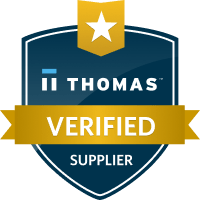ARMCOAT Plating
A proprietary chromium coating, ARMCOAT plating increases wear and corrosion resistance when applied to metal. You can expect your metal parts to be protected from friction, weather, and chemicals, as the process provides excellent adherence, uniformity, and lubricity.
There is no need for undersize design calculations in most applications, as the plating will generally not exceed .0002”.
There is a great deal of flexibility in choosing base metals, as the coating is compatible with most ferrous and non-ferrous metals. Plus, you can realize cost savings, since you do not have to invest in costly base materials (i.e. stainless steel) or have the parts ground to bring them back to original specifications.
The Benefits:
- Improved metal lifespan
- More profits
- High corrosion resistance
- High resistance to heat and cold
- Positive adhesion
- Very hard
- Self-lubricating
- No additional grinding required
Common Uses for ARMCOAT Plating
One of the things that makes ARMCOAT plating so widely used is its versatility. The process involves the deposition of a thin layer of metal onto a substrate, which provides enhanced protection, improved aesthetics, and increased durability. This makes armcoat plating perfectly suited for several different applications across multiple industries. Here are some of the most common uses for ARMCOAT plating, sorted by benefit:
- Corrosion Protection: One of ARMCOAT plating’s primary applications is to provide comprehensive corrosion resistance to metal components. The plated layer acts as a barrier, protecting against corrosive elements such as moisture, chemicals, and other environmental factors. For this reason, ARMCOAT plating is widely used in industries such as automotive, aerospace, marine, and electronics, where it’s vital for all components to resist corrosion in order to work properly.
- Wear & Abrasion Resistance: ARMCOAT plating acts as a protective coating, which reduces friction and minimizes the wear that is caused by frequent movement and constant contact. This makes this type of plating ideal for engine parts, molds, cutting tools, and machine components that are often subjected to high levels of wear and tear.
- Electrical Conductivity: Because it works by depositing a layer of highly conductive metal, such as copper or silver, onto a product’s surface, ARMCOAT plating helps to efficiently transfer electricity with minimal resistance. This makes it a popular option in the electronics industry, where it’s important to have reliable electrical connections for optimal performance.
- Decorative Finishes: ARMCOAT plating is often used to improve the appearance of various products. A layer of decorative gold, silver, or chrome can provide a lustrous and visually appealing finish to most surfaces. If you want your product to be aesthetically pleasing as well as functional, ARMCOAT plating will be an excellent choice.
- Heat Resistance: ARMCOAT plating acts as a thermal barrier, protecting the product from heat-related damage over time. This makes it ideal for use in the aerospace, power generation, and industrial machinery industries.
ARMCOAT plating offers a wide range of applications that span multiple products and industries. No matter what the task at hand might be, this type of plating is a versatile solution that meets the diverse needs of different industries. If you have any further questions about this type of plating, don’t hesitate to reach out to Ace Roll & Shaft today!
Properties
Hardness: While the base metal will modify the measurement when using conventional micro-hardness methods, ARMCOAT has a hardness in excess of 70 Rockwell “C,” and Vickers Diamond measurements find a 1020-1100 hardness rating.
Corrosion Resistance: As long as the base metal is non-porous and properly prepared, ARMCOAT will resist attacks by organic and inorganic compounds. The exceptions are hydrochloric and sulfuric acids.
Heat Resistance:
ARMCOAT resists temperatures from -400 F to 700 F. At 700 F, there is some reduction in hardness and wear resistance.
At 1300 F, the material will start to react with sulfur, phosphorus, and carbon monoxide.
Hydrogen Embrittlement:
With proper pre-process surfacing and application, ARMCOAT will generally prevent this from occurring.
However, the process will not necessarily fix previous damage and embrittlement.
Adhesion:
Under standard ASTM bend tests, no matter what the temperature, the coating will not chip, flake, peel,
or otherwise separate from the base metal.
Effect on Base Metal: The tensile, yield, and fatigue properties of the base metal are generally not affected.
Coefficient of Friction
Material-------Against-------Material Static Sliding
Steel-------Against-------Steel 0.30 0.20
Steel-------Against-------Babbitt 0.25 0.20
Steel-------Against-------ARMCOAT 0.17 0.16
Babbitt -------Against-------ARMCOAT 0.15 0.13
ARMCOAT-------Against-------ARMCOAT 0.14 0.21
Measurements made at 72 F without lubricants, using other materials for comparison.
Call Today!
For more information about the benefits of ARMCOAT plating or to get started on protecting your metal components, Ace Rolls & Shaft is here to help. We encourage you to
contact our shop today for additional assistance from our experienced professionals!
1924 Greengarden Rd, Erie, PA 16502
| 814-446-7017
Web Design
by LocalEdge, all rights reserved

